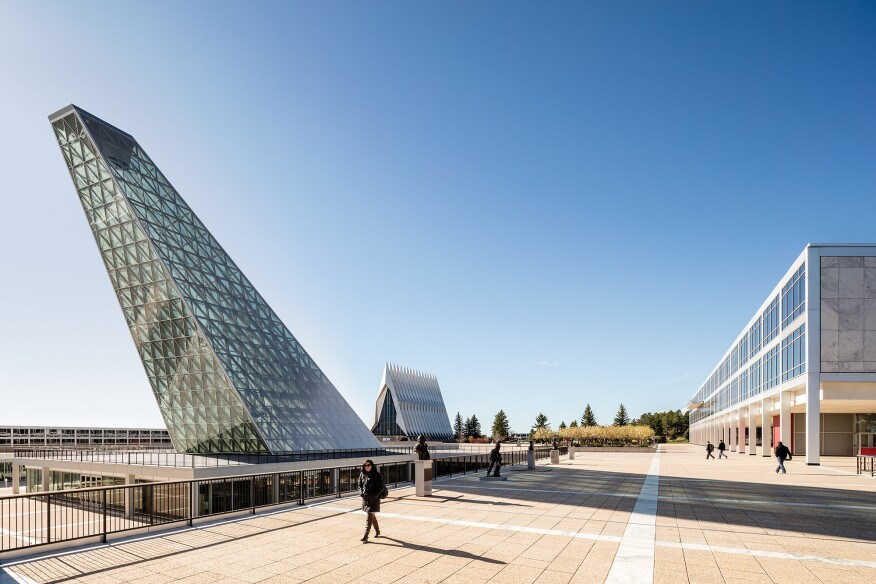The judging process for Architizer's 12th Annual A+Awards is now away. Subscribe to our Awards Newsletter to receive program updates, and stay tuned for winners announcements later this spring.
The word ‘sustainable’ is becoming more and more frequent in descriptions of architecture projects. And while there are many ways one can approach this term, in essence, it refers to a concept that acknowledges the need reduce the damage done to the environment in order to preserve it for future generations, as well as using materials and energy more efficiently. In architecture, sustainability is demonstrated by providing design solutions to control the social, economic and environmental footprints of a project.
Some architects have resorted to high-tech mechanisms to make the most of renewable energy sources in modern buildings. On the other hand, a few firms are learning from age-old practices of using natural materials and understanding local climate and ecology. We have been taking note of all these innovative projects and, for the past decade, Architizer has been celebrating their ideas in our A+Awards with the Architecture +Sustainability category. New this year, we are also introducing the Best Sustainable Firm category, celebrating one firm that stand out in the field of sustainability, energy efficiency and environmental design.
As you prepare your submission for the 10th Annual A+Awards, be inspired by the following collection, which traces the evolution of sustainable design in a chronological retrospective of A+Awards winners over the past decade:
2013: Cabañas Morerava
AATA ARQUITECTOS | Easter Island, Chile
Popular Choice, 2013 A+Awards, Architecture +Sustainability
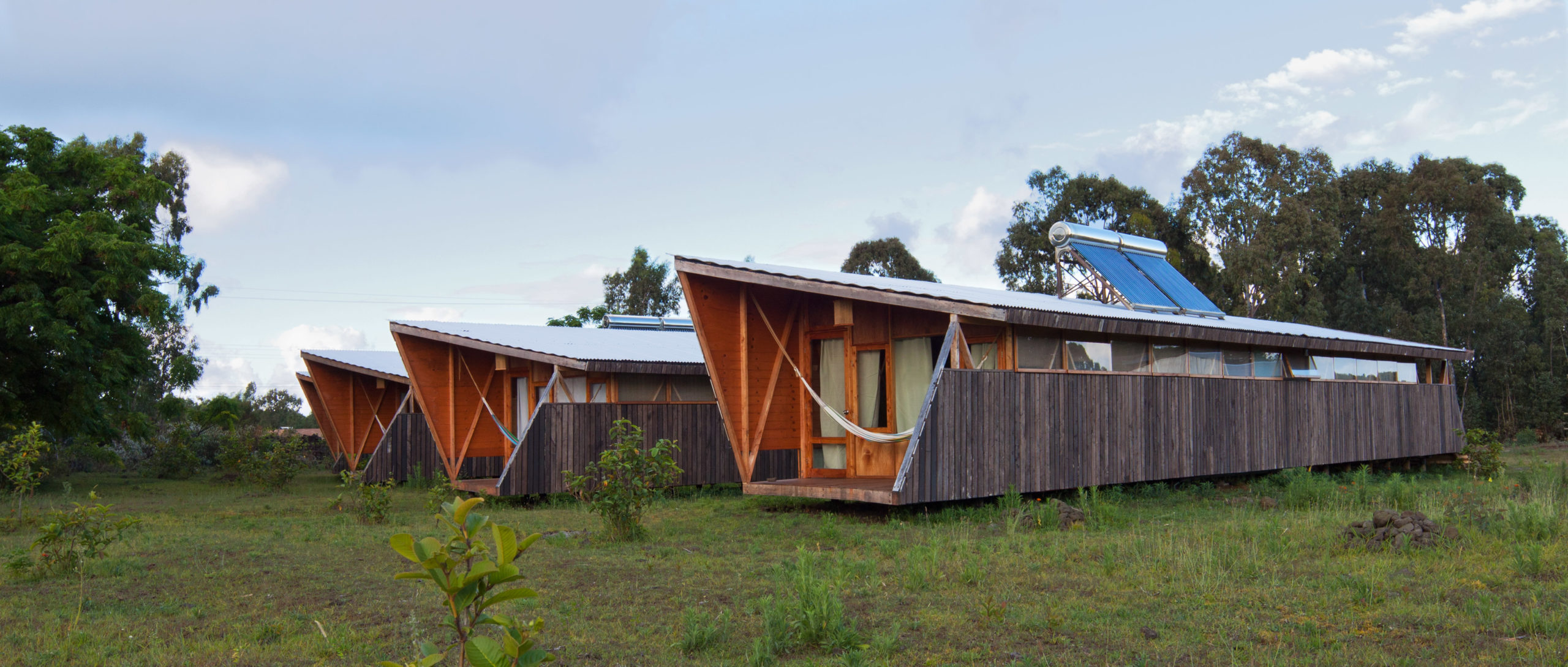
 Given the delicate climate balance in Easter Island, the firm wanted to create cabins that had the least impact on the environment both in construction and use. The prefabricated cabins are designed to make the most efficient use of commonly available construction materials. They are also raised above the ground to allow the absorption of water in the earth and ventilation below the cabins. Meanwhile, there is also space between the ceiling panels and the zinc coating for insulation. The presence of windows on the top and bottom on both sides enables cross ventilation and the use of natural light without compromising the privacy of its occupants.
Given the delicate climate balance in Easter Island, the firm wanted to create cabins that had the least impact on the environment both in construction and use. The prefabricated cabins are designed to make the most efficient use of commonly available construction materials. They are also raised above the ground to allow the absorption of water in the earth and ventilation below the cabins. Meanwhile, there is also space between the ceiling panels and the zinc coating for insulation. The presence of windows on the top and bottom on both sides enables cross ventilation and the use of natural light without compromising the privacy of its occupants.
This design approaches sustainability by preserving the environment it is built on instead of looking at energy generation. Mechanisms are in place to utilize natural light and ventilation, further reducing the dependence on electricity.
2014: Edgeland House
Bercy Chen Studio LP | Austin, Texas
Popular Choice and Jury Winner, 2014 A+Awards, Architecture +Sustainability
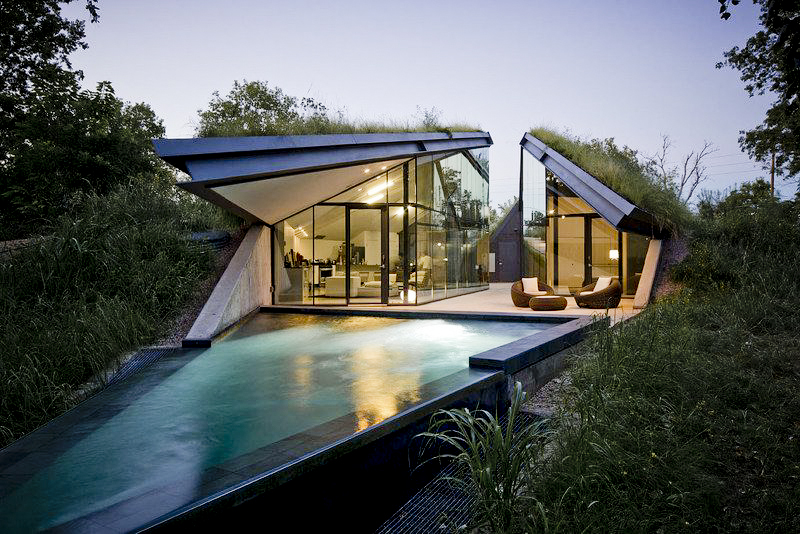

A modern adaptation of the Native American Pit House, this home is partially burrowed into the sloped site. The underground nature of the design allows the home to be cool in the summer and warmer in the winter, reducing power consumption. The roof is also covered in vegetation to increase green cover and continue the natural landscape on the house itself. The studio added a hydronic HVAC system that combines hydronic heating and cooling, geothermal heat exchange, phase‐change thermal heat storage and a green roof to make it more energy-efficient. Furthermore, the smart pool ties into the geothermal system, adding one more thermal body to the system.
The two-volume design is a good example of translating a vernacular housing typology into a modern residence. It combines age-old insulation practices with newer technologies to create an award-winning energy-efficient abode that not only looks great but is also highly functional.
2015: Dixon Water Foundation Josey Pavilion
Lake|Flato Architects | Decatur, Texas
Jury Winner, 2015 A+Awards, Architecture +Sustainability
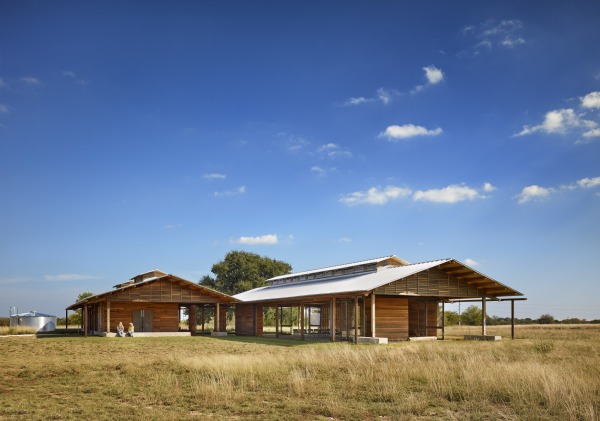
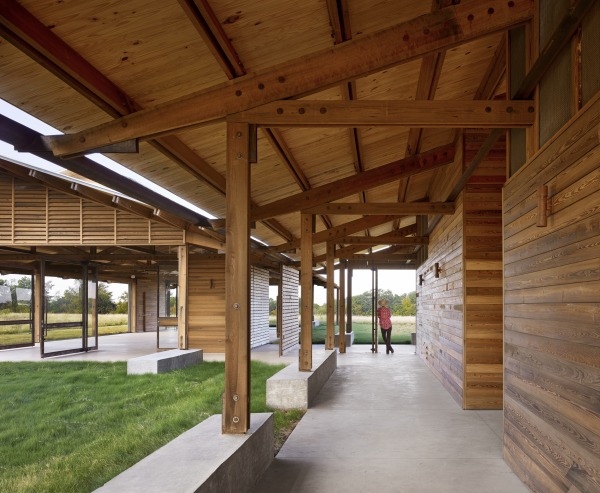
The main focus of this design was the promotion of healthy watersheds using sustainable land management. The entire structure comprises two connected sheds that collectively house a herbarium, restroom, kitchen and multi-use space for education events. Keeping in mind the changing weather patterns throughout the year, its form locks in the cool winds in summer and blocks the frigid winter breeze. An overhanging roof provides shaded spaces and the slitted wooden doors provide ventilation. A cupola on the roof also brings in light white expelling hot air from the interiors. In addition to the architecture, all the wastewater on site is treated and released back into the environment. Solar panels have also been added to produce energy and make it self-sustainable.
As evidenced in the project, one of the key aspects of sustainable design is understanding the site context and making the design work synchronously with it to make the best use of natural resources and sensitive building materials available.
2016: Ilima Primary School
MASS Design Group | Ilima, Democratic Republic of the Congo
Jury Winner, 2016 A+Awards, Architecture +Sustainability
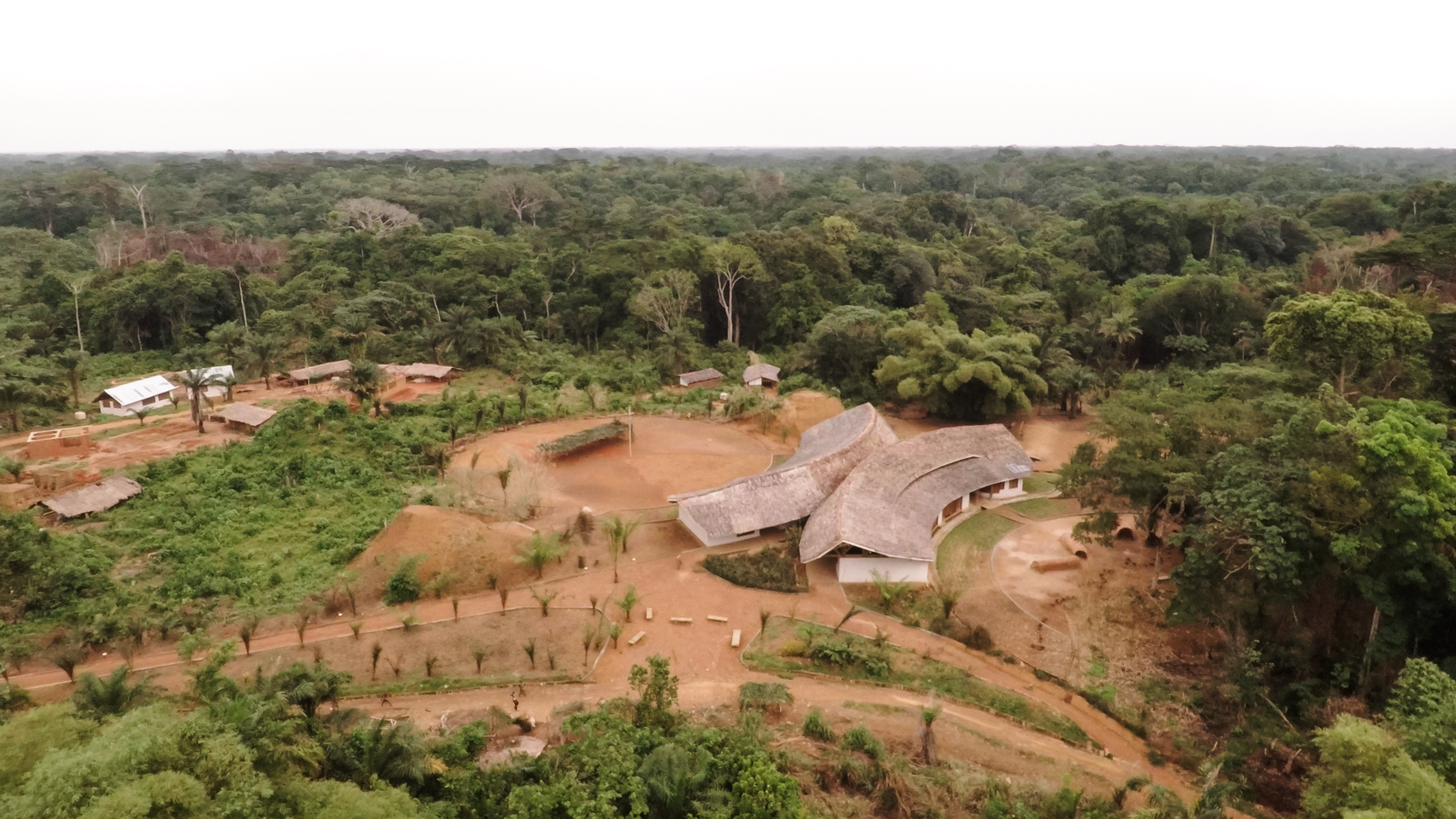
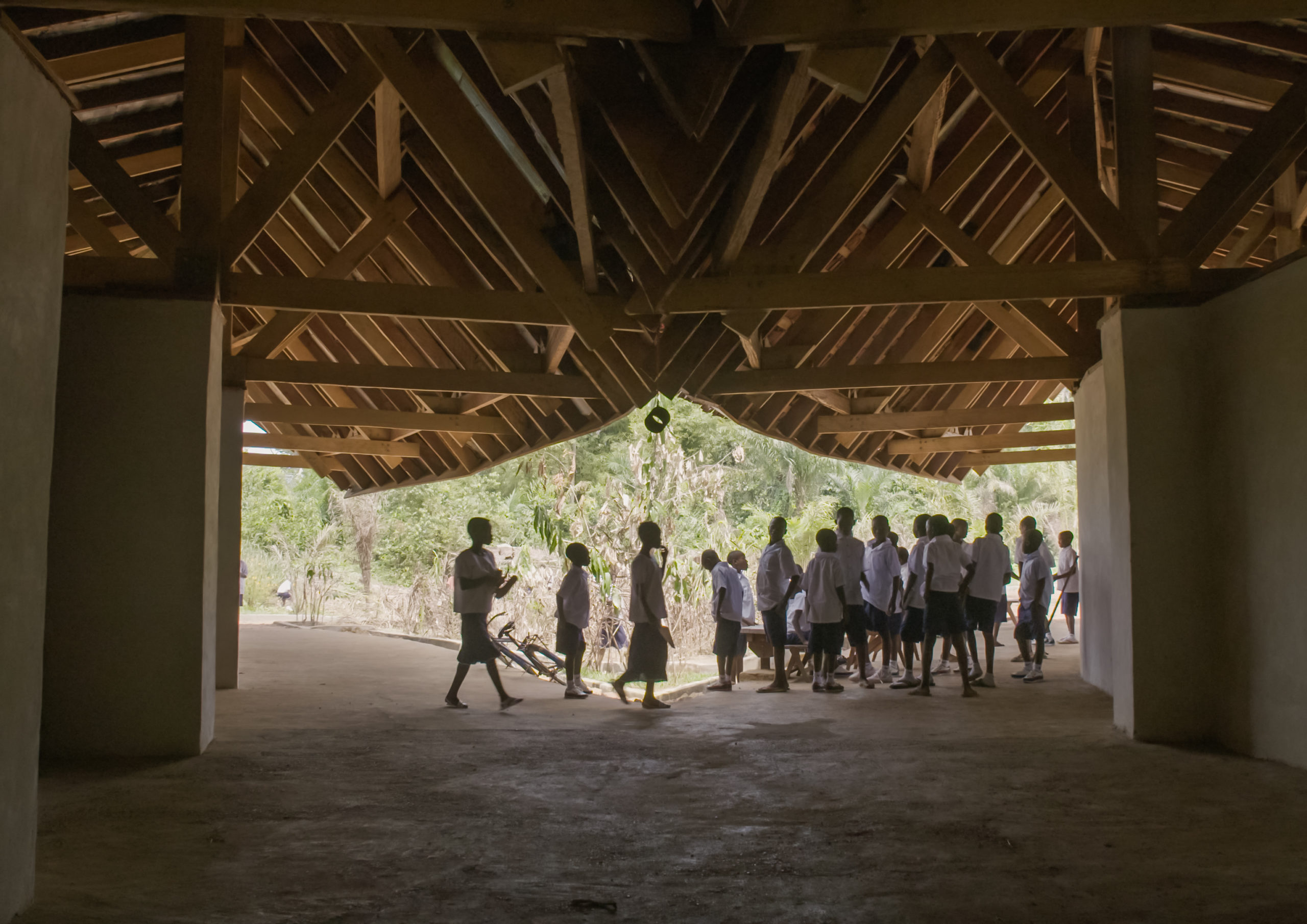 This school, located amid a jungle, also serves as a community center for village-level programming to promote sustainable farming and hunting practices. As the site is very remote, the studio worked with local conservationists to find appropriate construction materials on the site itself. The selected trees were hand-sawn and treated by local workers to create timber trusses, a framework for the roof and additional furniture and details. Shingles used in the roof and walls are made using a mix of earth and native trees. The design incorporates a roof and gutter system to make the most of heavy rainfall and openings on the top to allow natural illumination and ventilation.
This school, located amid a jungle, also serves as a community center for village-level programming to promote sustainable farming and hunting practices. As the site is very remote, the studio worked with local conservationists to find appropriate construction materials on the site itself. The selected trees were hand-sawn and treated by local workers to create timber trusses, a framework for the roof and additional furniture and details. Shingles used in the roof and walls are made using a mix of earth and native trees. The design incorporates a roof and gutter system to make the most of heavy rainfall and openings on the top to allow natural illumination and ventilation.
The approach to sustainability is more than just using environmentally-friendly materials; it also focuses on empowering the local community and enhancing their lifestyle. There was also a focus on training local architects in sustainable practices to ensure future development.
2017: Center for Postgraduate Studies
Studiohuerta | Mexicali, Mexico
Popular Choice and Jury Winner, 2017 A+Awards, Architecture +Sustainability
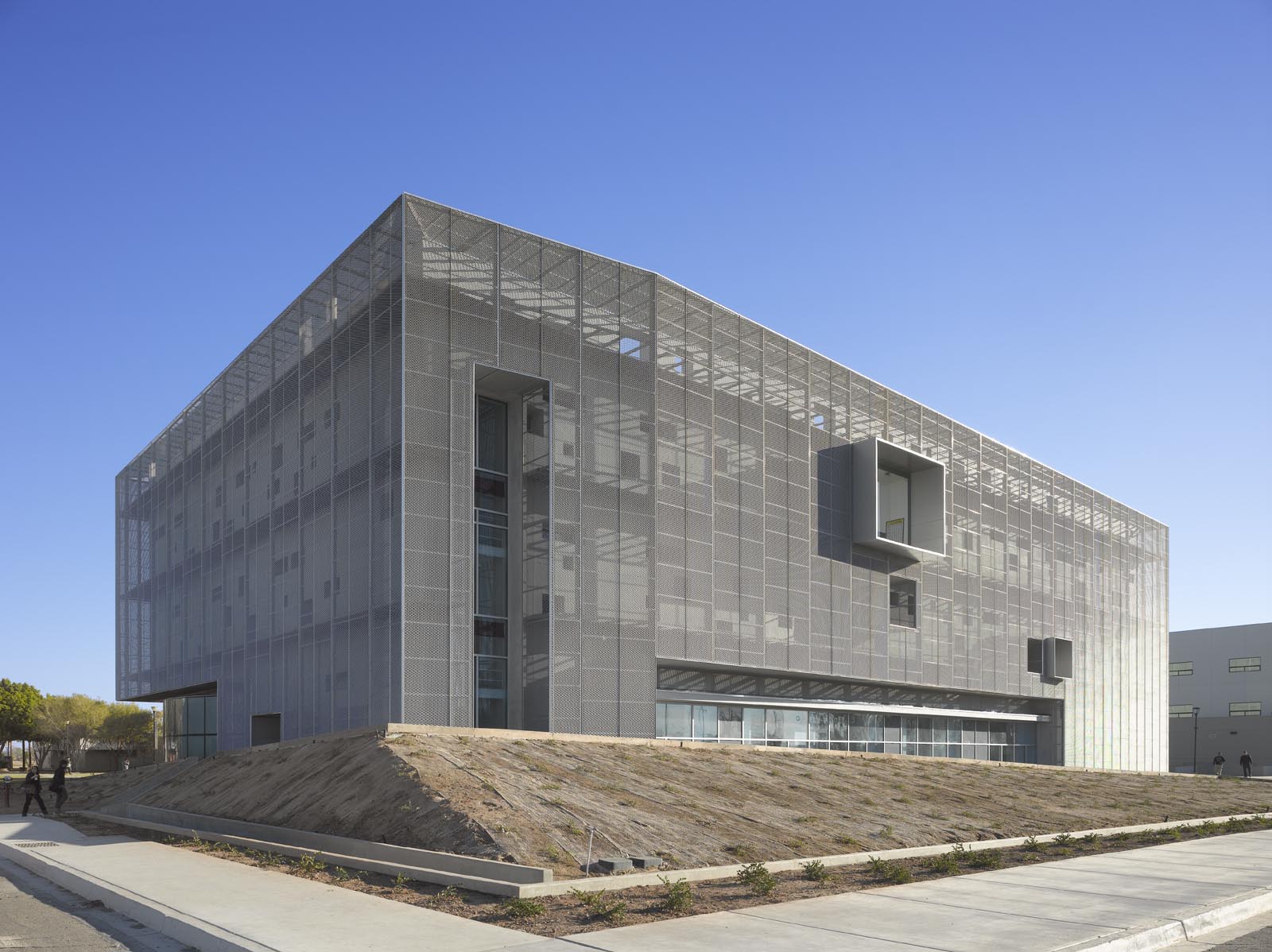
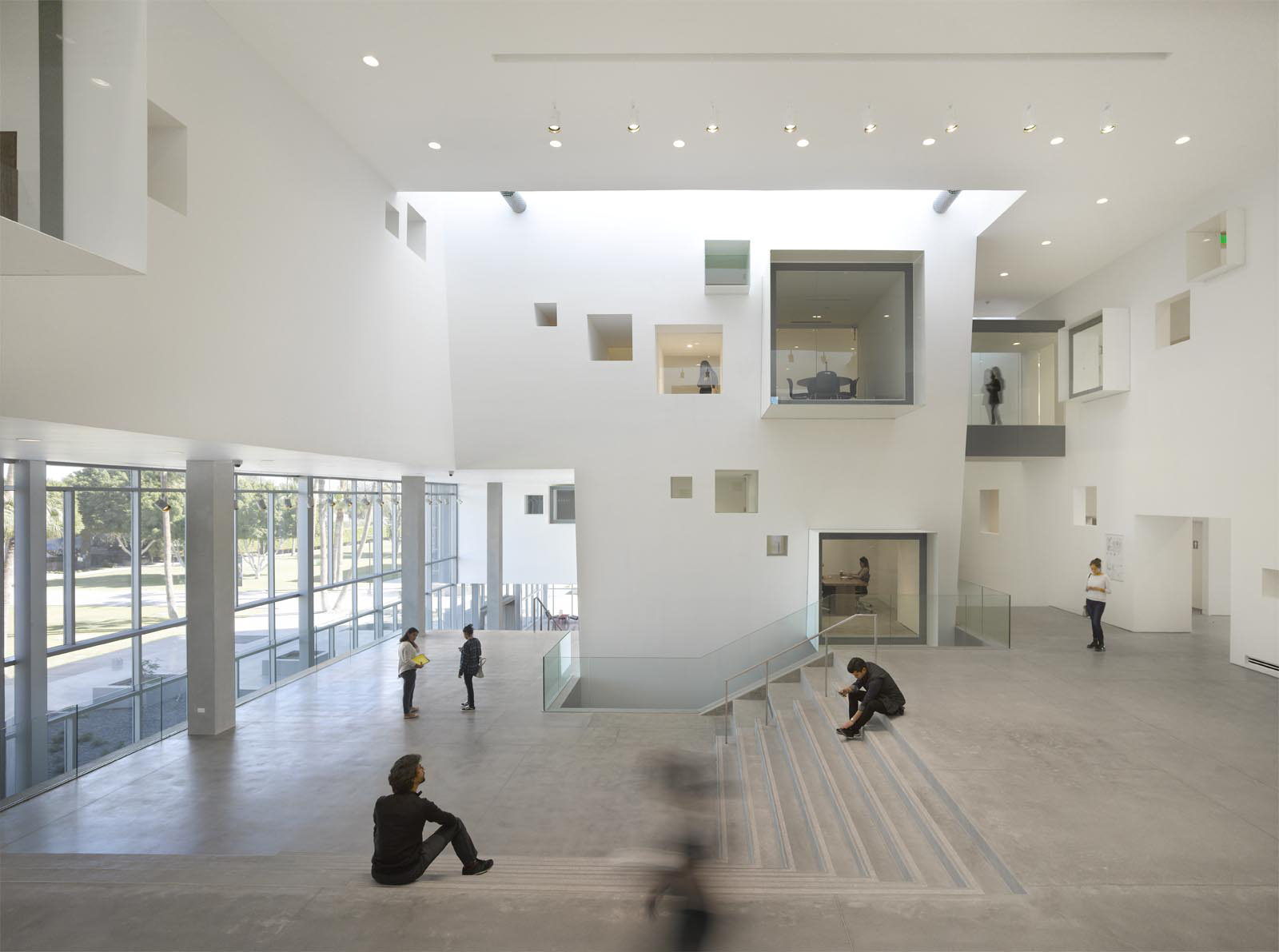
Images by Roland Halbe
The center not only looks like a fortress but also acts as one against harsh weather conditions and earthquakes that take place in Mexicali. The southern and western sides are reinforced with a layered shell and engineered topography to protect the interiors from the harsh sun. On the other end, the northern connects with the campus quad. The external shell includes an anti-seismic framework and an aluminum screen to allow air circulation and reduce heat gain. Apart from the play between open and closed spaces within for ventilation, the center also contains a central atrium which is one of the thermal centers that funnel out hot air through solar chimneys.
This project understands the harsh climatic conditions in the region and proposes a system that not only protects its occupants but also reduces the dependence on energy to make this happen. Using the several techniques outlined above, the building saw only half the energy demand when compared with other buildings of the same size and form.
2018: Villa F / the off-the-grid house in the central highlands of Germany
Christoph Hesse Architects | Medebach, Germany
Jury Winner, 2018 A+Awards, Architecture +Sustainability

 The occupants of this house are not only farmers but also pioneers of biogas technology in the country. Given their dedication to renewable energy, it is no surprise that sustainability and environmentally-friendly design became the focal points of the project. The availability of biogas helps ensure that the building remains energy efficient. Seeing the benefits, the entire village opted to connect to the local heating grid of the farm. The building’s curved form was a requirement of the client for an ideal surface-volume ratio to conserve energy.
The occupants of this house are not only farmers but also pioneers of biogas technology in the country. Given their dedication to renewable energy, it is no surprise that sustainability and environmentally-friendly design became the focal points of the project. The availability of biogas helps ensure that the building remains energy efficient. Seeing the benefits, the entire village opted to connect to the local heating grid of the farm. The building’s curved form was a requirement of the client for an ideal surface-volume ratio to conserve energy.
The best part about this design is the use of biogas instead of more conventional renewable sources of energy like solar power. It offers an alternate energy source for locations that might not have abundant sunlight as biogas production can be made possible in a variety of climates and topographies.
2019: No Footprint House (NFH)
A-01 (A Company / A Foundation) | Ojochal, Costa Rica
Popular Choice, 2019 A+Awards, Architecture +Sustainability
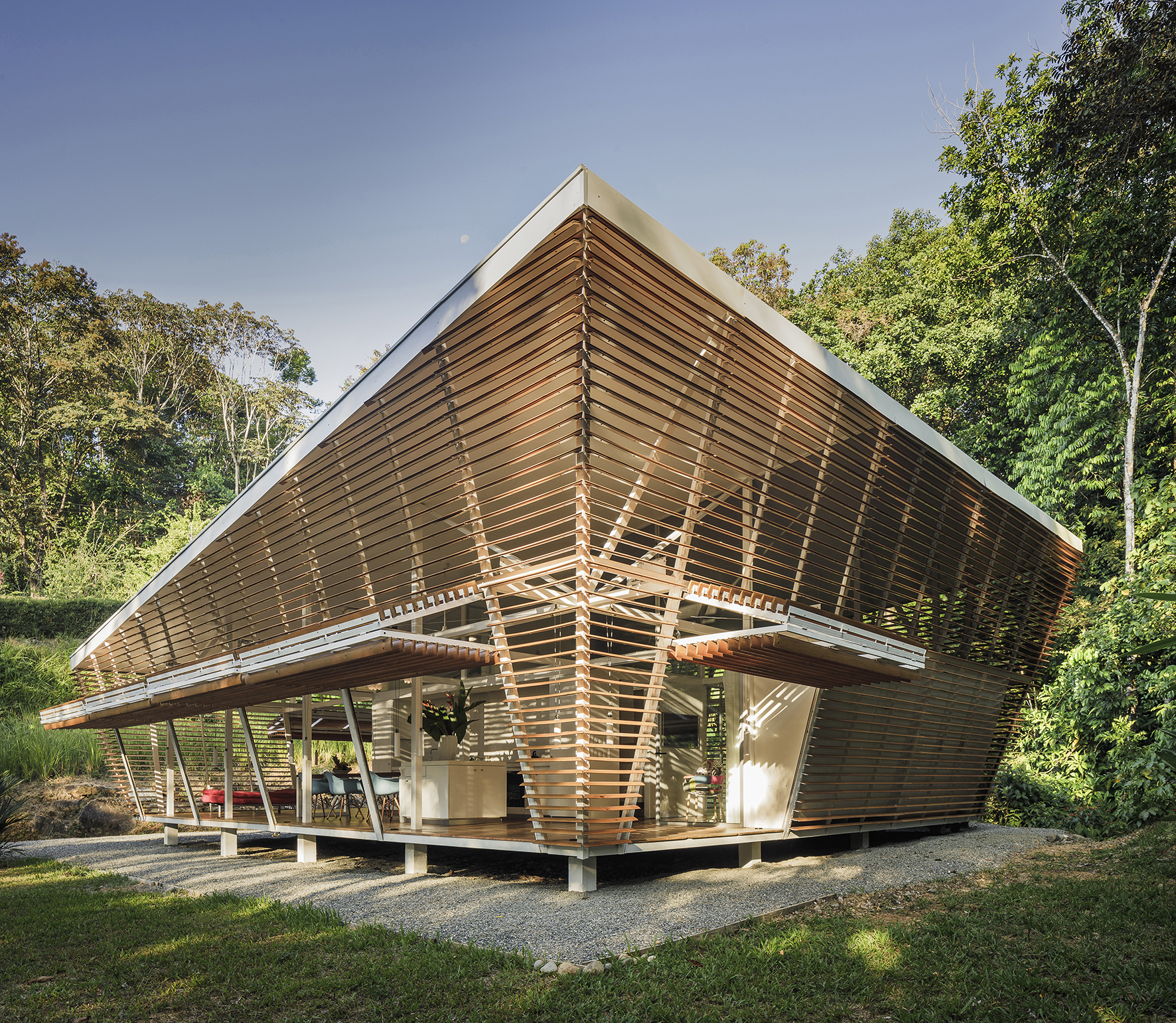

Images by Fernando Alda / Fernando Alda Fotografía
The No Footprint house is another example of thermal management using natural ventilation and light-controlling elements. All the functions of the home revolve around a central core for easy maintenance. The inclined external walls of the home reduce the direct impact of the sunlight and also prevents direct splashing of rainwater inside. The panels of these walls can be opened and closed as required. The see-through walls also connect the homeowners to the nature outside.
The prefabricated home was transported to the location in a single truck. This project acts as a prototype for homes that can later be customized to accommodate different client needs. The design is cost-effective while being environmentally conscious.
2020: Olympic House
3XN | Lausanne, Switzerland
Popular Choice and Jury Winner, 2020 A+Awards, Architecture +Sustainability
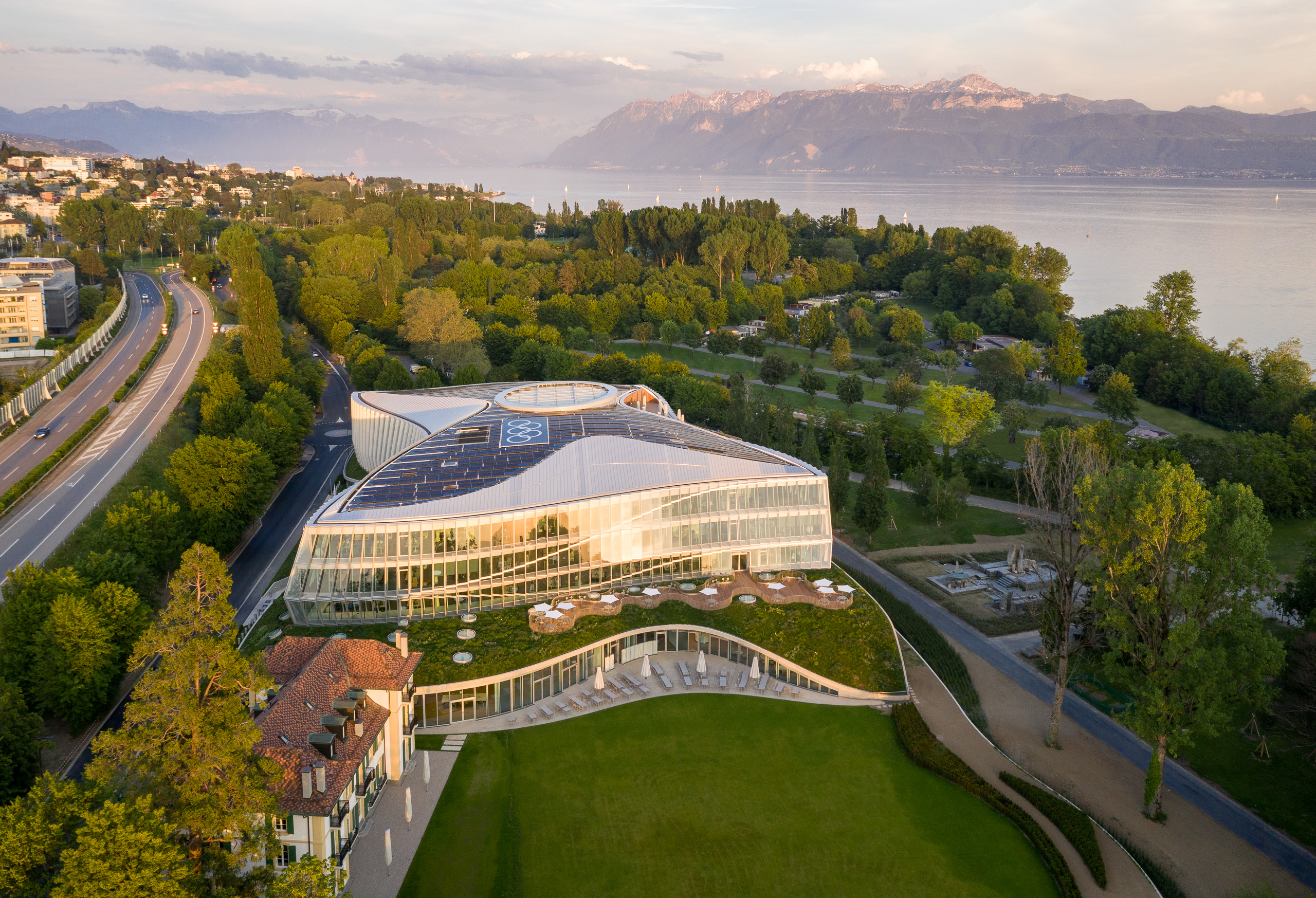
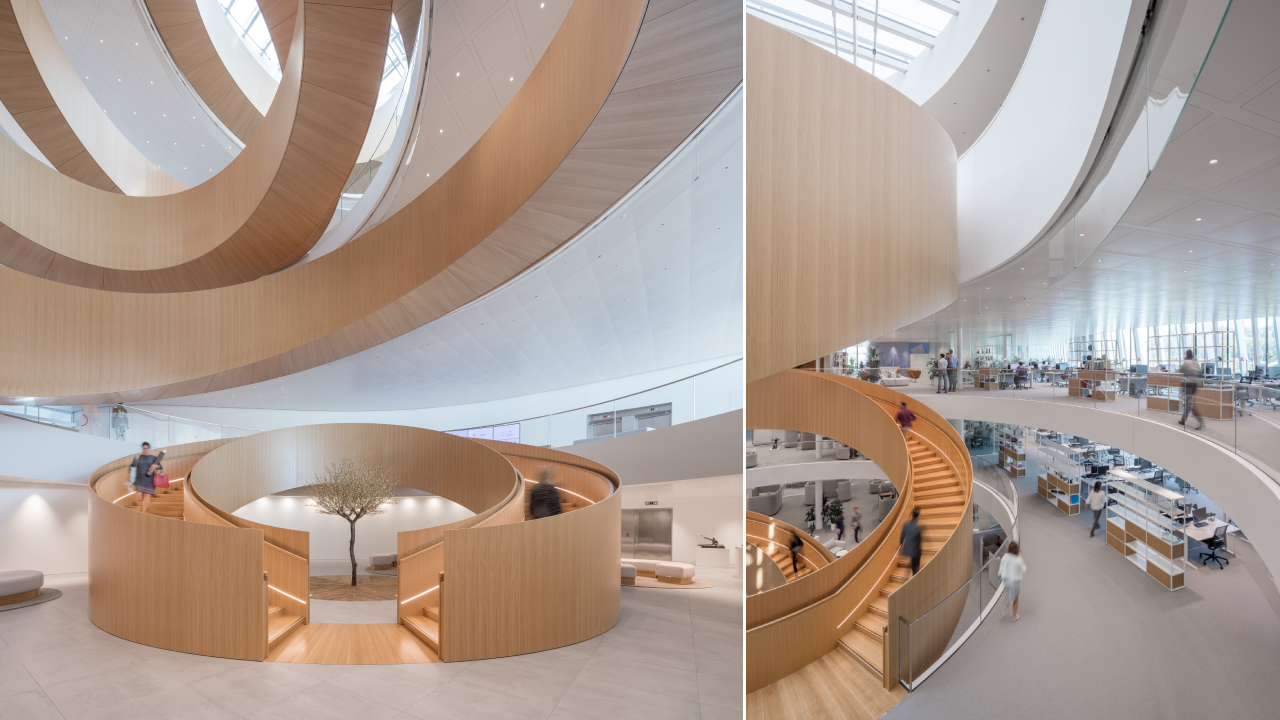 The headquarters of the International Olympic Committee claims to be the world’s most sustainable office building, having achieved LEED Platinum rating and the highest score ever given — 93 on 100. While planning the new office, 95 percent of the former building’s materials were recycled or reused in the new building. The curved façade of the building shades the inner spaces from the sun, reducing the need for air conditioners. The roof also features solar panels that make up for 10 percent of the total power required in the building. It also has mechanisms to collect rainwater and use it within the building.
The headquarters of the International Olympic Committee claims to be the world’s most sustainable office building, having achieved LEED Platinum rating and the highest score ever given — 93 on 100. While planning the new office, 95 percent of the former building’s materials were recycled or reused in the new building. The curved façade of the building shades the inner spaces from the sun, reducing the need for air conditioners. The roof also features solar panels that make up for 10 percent of the total power required in the building. It also has mechanisms to collect rainwater and use it within the building.
As the years go by, we see traditional energy conservation and generation methods be adapted to more modern forms and keep up with increasing energy demands. There is also awareness about recycling materials and causing minimal damage during construction.
2021: Fellows Hall, Williams College
PBDW Architects | Williamstown, Massachusetts
Popular Choice, 2021 A+Awards, Architecture +Sustainability
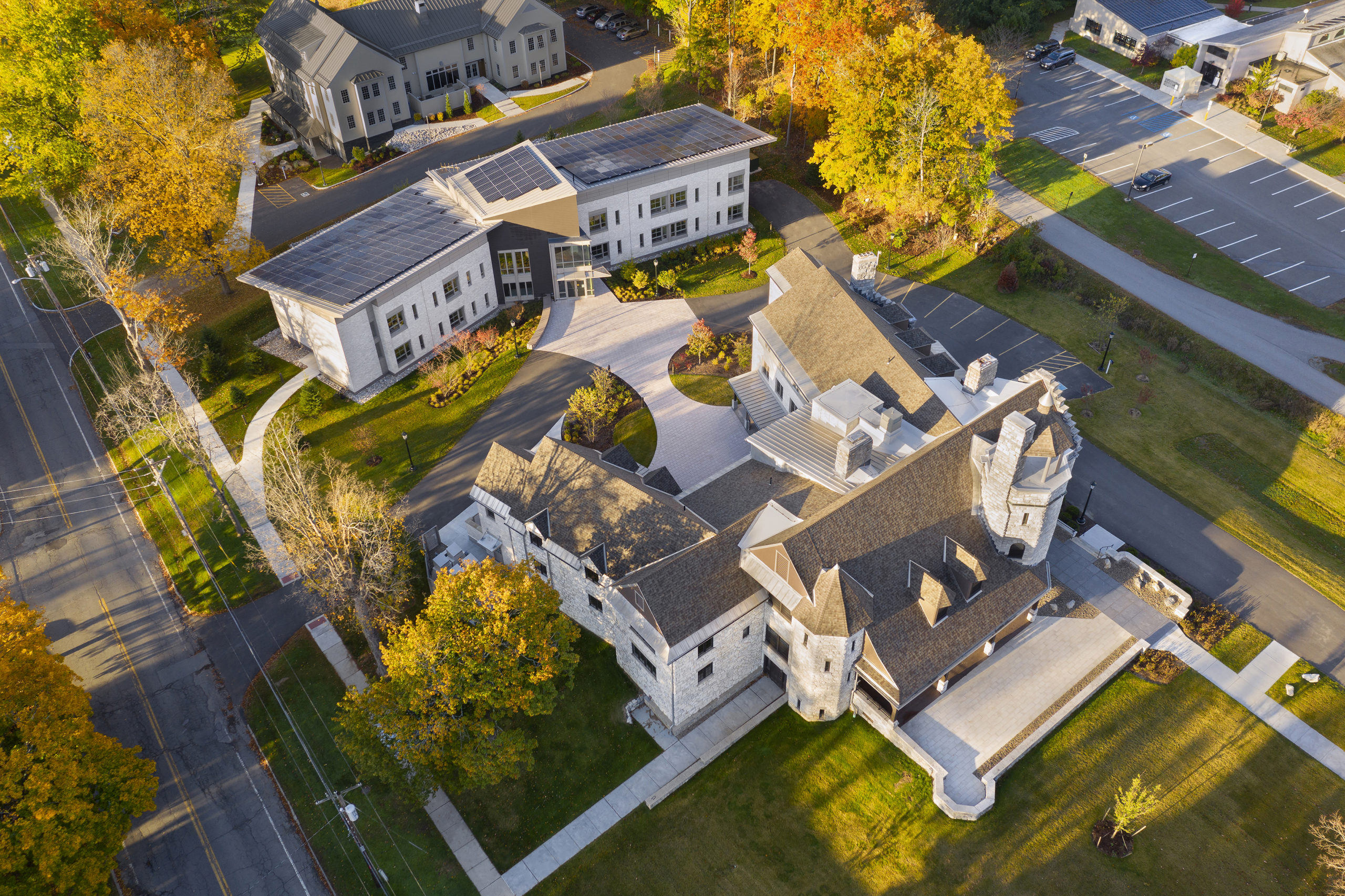
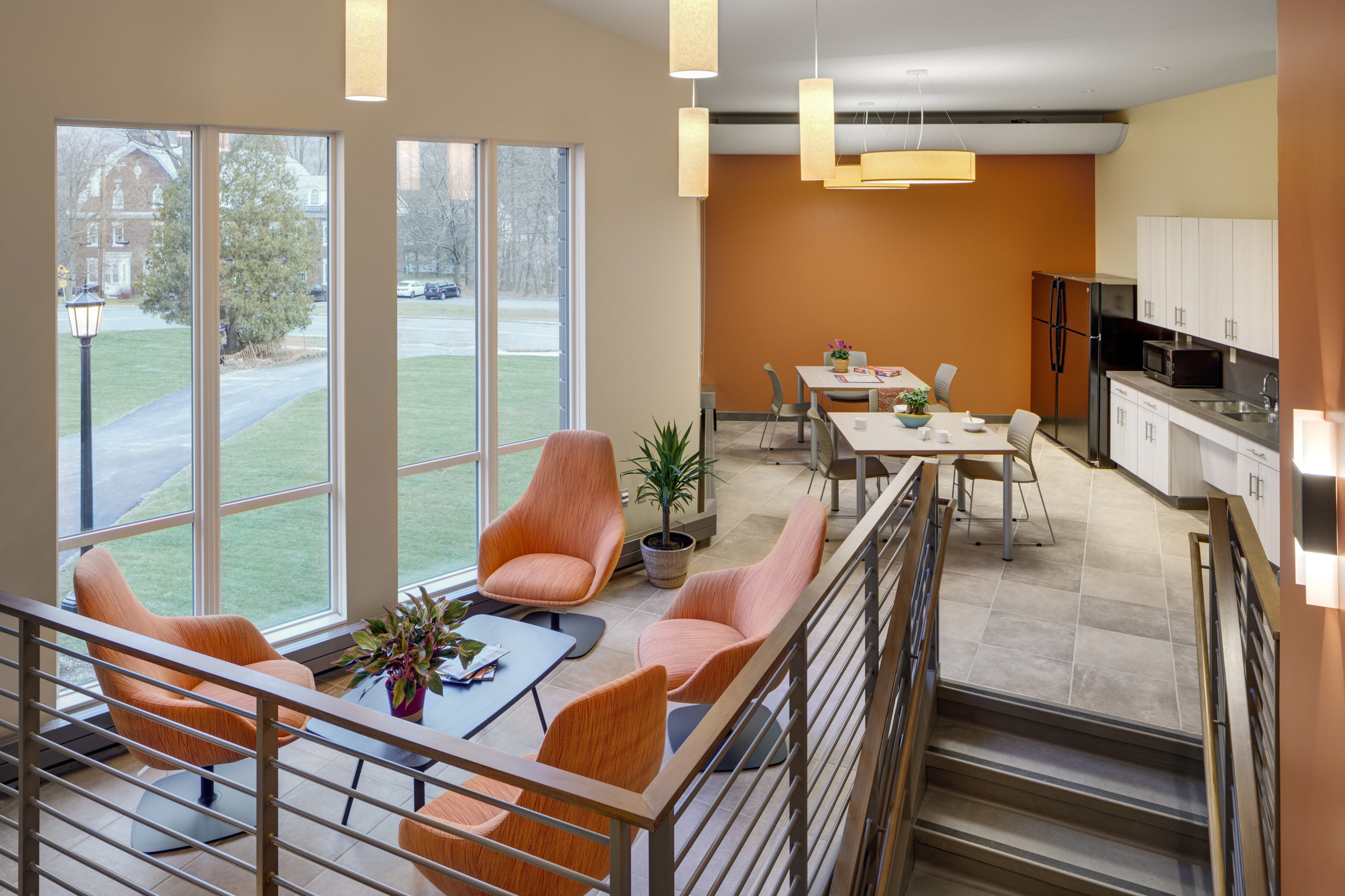
Images by Francis Dzikowski/OTTO
The first net-zero energy dorm at Williams College focuses on using natural light, connecting with nature and improving student well-being. The orientation of each wing was planned using daylight modeling to create ideal thermal conditions inside. The use of wooden construction and a 22% window-to-wall ratio enhances energy efficiency and reduces the carbon footprint. The fully-electric dorm also relies on photovoltaic cells for power. Additionally, heating and cooling systems are connected to ground-source heat pumps supported by geothermal wells.
This project shows that sustainable practices can be incorporated in community housing just as efficiently as institutional buildings. Understanding how the sun travels and designing to accommodate the daylight patterns can have a significant impact on energy consumption, a lesson future designers can take note of.
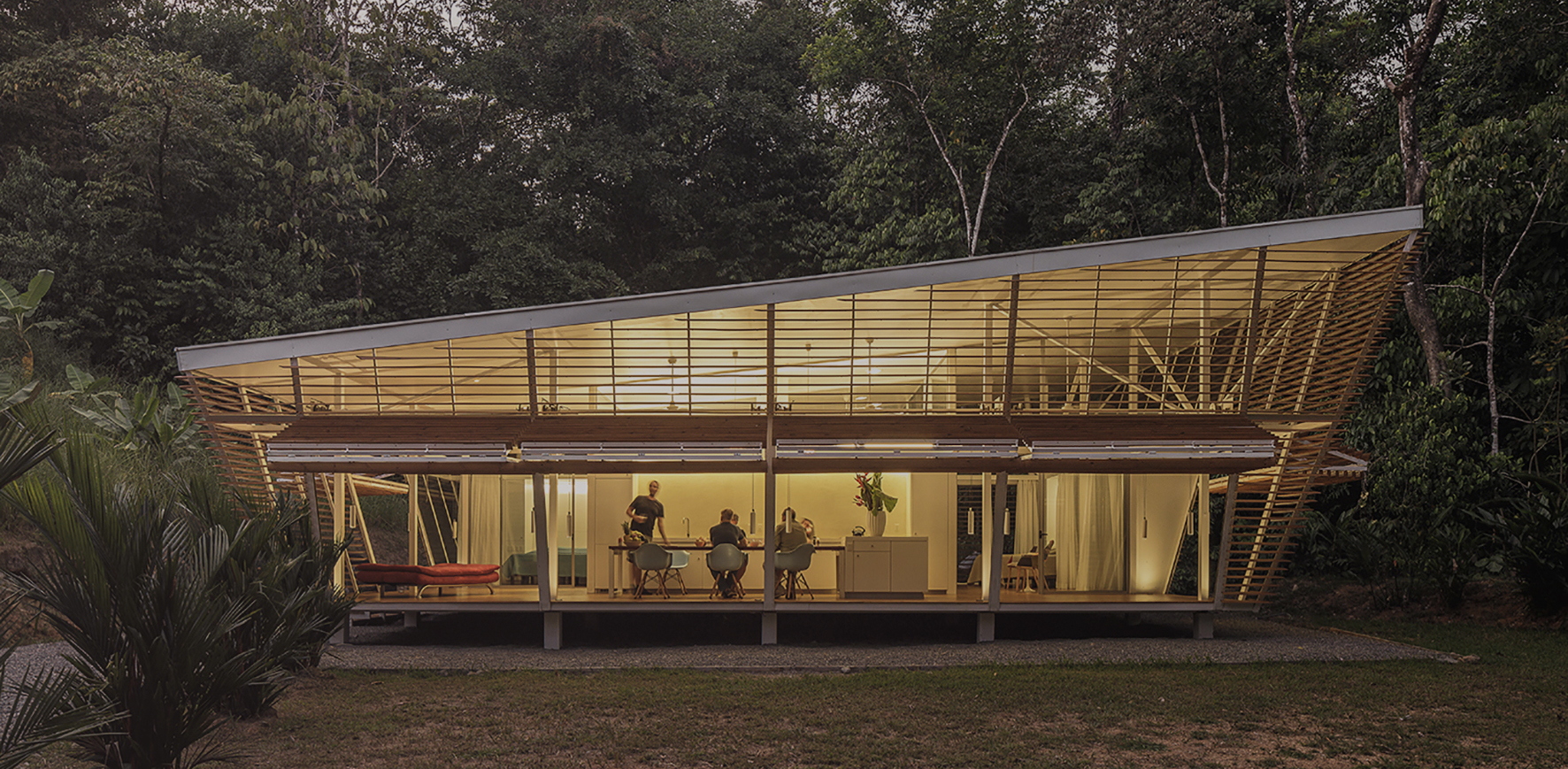

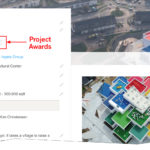
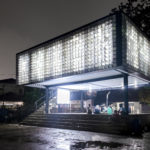
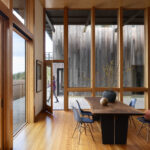

 Cabañas Morerava
Cabañas Morerava  Center for Postgraduate Studies
Center for Postgraduate Studies  Dixon Water Foundation Josey Pavilion
Dixon Water Foundation Josey Pavilion  Edgeland House
Edgeland House  Ilima Primary School
Ilima Primary School  No Footprint House (NFH)
No Footprint House (NFH)  Olympic House
Olympic House  Villa F / The-Off-Grid House in the central highlands of Germany
Villa F / The-Off-Grid House in the central highlands of Germany 